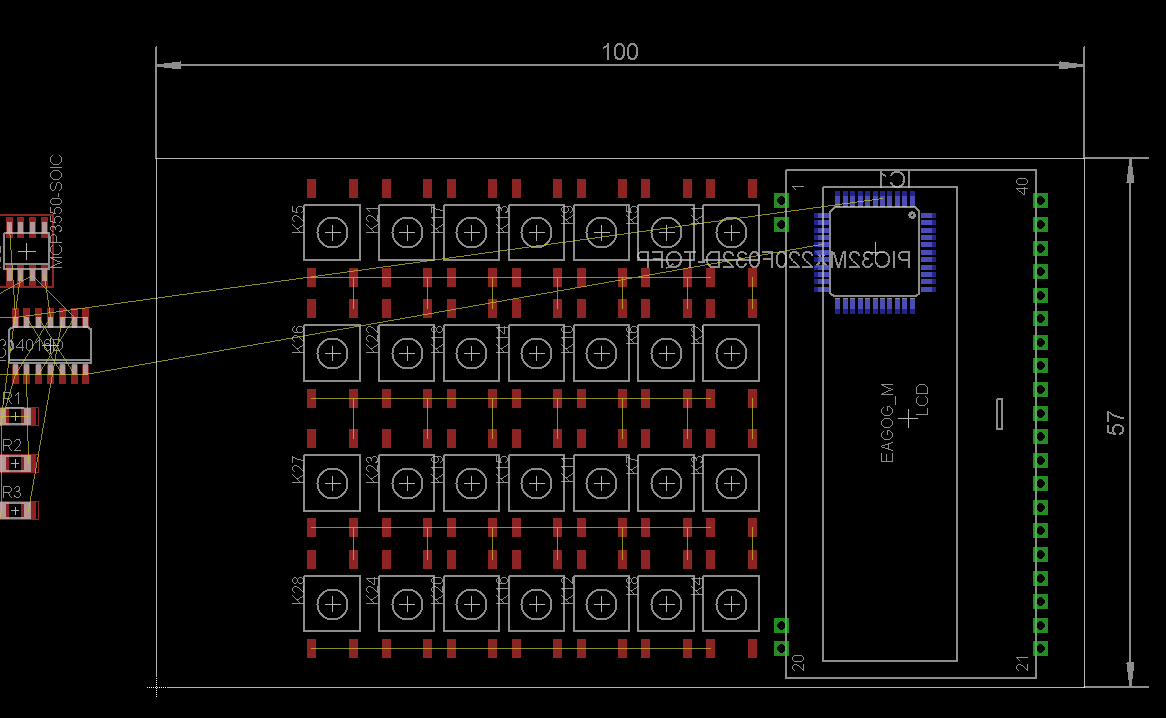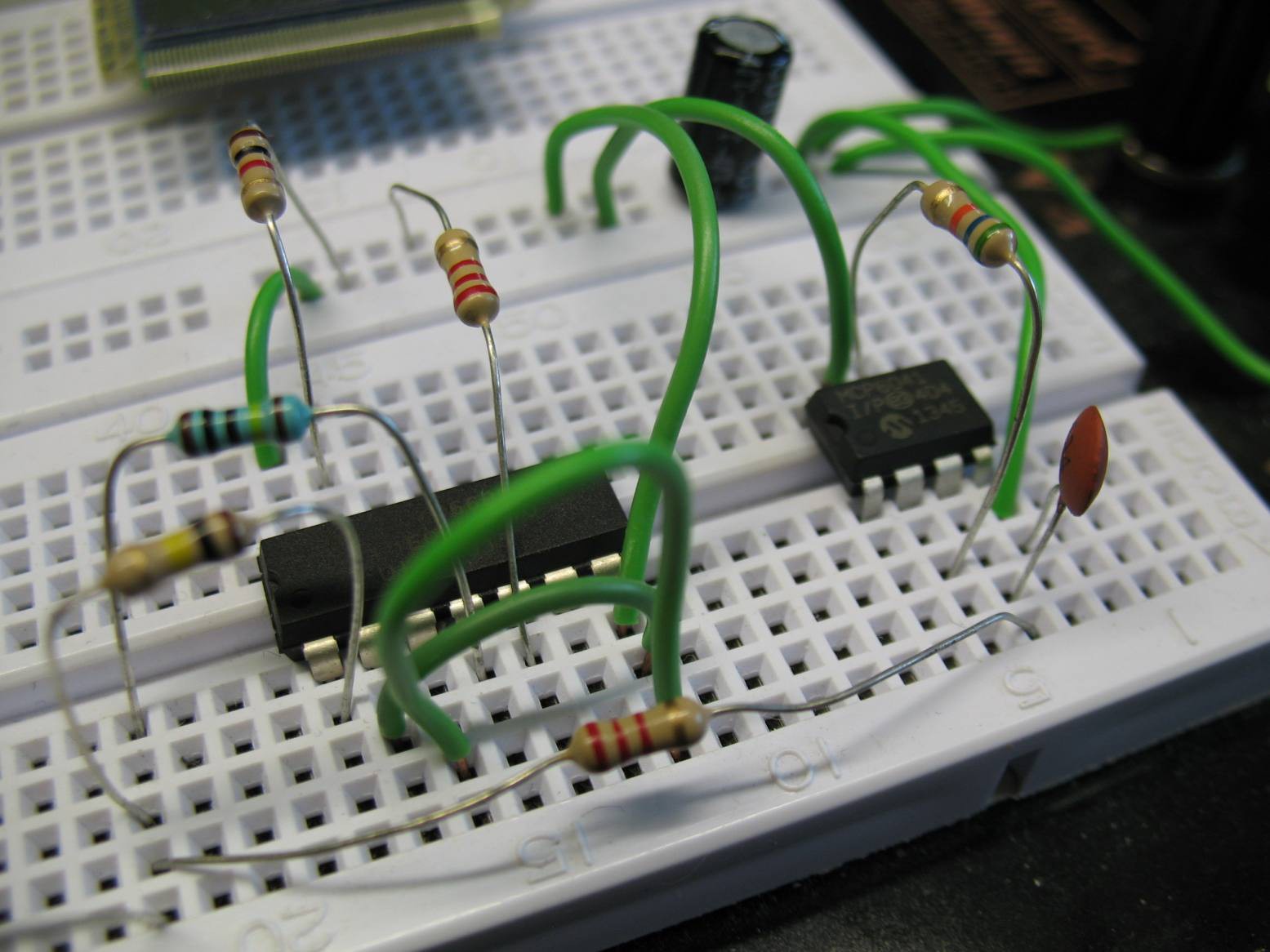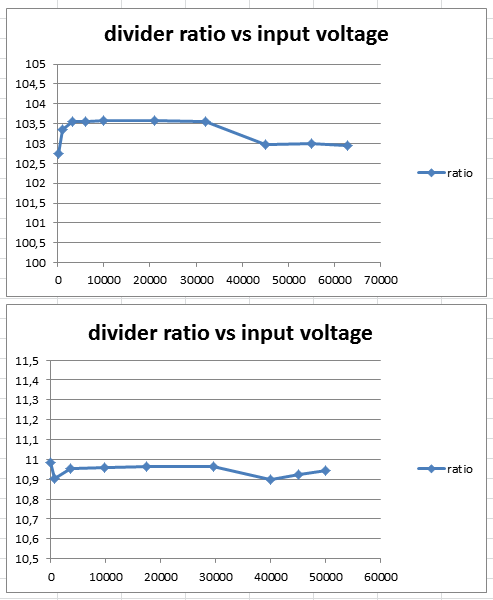-
Micro progmeter
12/25/2015 at 14:33 • 0 commentsThis project is stalled for a months, but for a square inch contest I started new incarnation of progmeter and this time it is finished project. Take a look at it #Micro progmeter
-
Size matters
08/19/2014 at 14:11 • 0 commentsSeems like I spoke too soon about the display and keys.
Jelly-bean 6x6mm keys do have quite big footprint and I can place four of them into width of 55mm, which was my personal limit of width. Display is quite big as well, so I have to make the board 57mm wide.
![]() Well, I'm going to think about the dimensions and components again; I have to maek decision whether to use common components or keep the physical dimesnions small.
Well, I'm going to think about the dimensions and components again; I have to maek decision whether to use common components or keep the physical dimesnions small.By the way, I set up github repo for this project and I'm uploading there work as it progresses.
-
Design decisions
08/19/2014 at 09:48 • 0 commentsFist of all, I have to give up idea of universal DMM. Designing DMM is not trivial task, especially when it comes to mechanical design, good reliable switches, overvoltage protection and other stuff that makes DMM reilable nad safe. There is a lot of cheap DMMs with poor protection and those are dangerous in users hands. I'm not going to try to beat years of experience of Fluke or similar brands.
What I'm going to do is to design simple and affordable device with measurement ranges that do have sense for Progmeter. My aim is to measure voltage up to cca 100V - I believe most of the hobbysits dosen't need more for 99,9% of their time. For higher voltages you can always use your normal DMM (as you probably won't need the Progmeter functions), as Progmeter isn't going to replace your DMM. For measuring resistances, my aim to is measure 10R to 10M with accuracy of at least 0,5% or better (it will be tough for two wire method, especially at lower resistances). I'm not decided about current measurement for now; it could be handy, but on the other hand I have to admit I use current measurements only for checking whether my device sucking a lot of juice or not. I don't feel like this is somehow important parameter for progmeter function - and you can always emulate it with measurment of voltage drop on resistor. Progmater is especially suited for calculation of current from voltage drop.
At first I wanted to use some nice OLED display, but I decided for LCDs due to lower power consumption. Something like eadogm132 looks nice. It can display four lines of text, as well as HUGE characters needed for DMM function. Tiny characters are nice, but when working in worse light conditions or in the need of checking the vlue on display from distance of few meters are big character definitely better.
I'm going to replace the readily available keyboard for matrix of normal SMD switches, something like this. It is very hard to find some keyboard with more than 16 keys.
ADC used will be likely MCP3550, it is cheap and simple to use sigma-detla ADC, with truckload of precision for this application.
For MCU, I'm going multiplatform again and write firmware and design PCB for some PIC micro as well as AVR8 or some tiny ARM.
Now I can start drawing schematics and place components on PCB.
-
Resistor divider + 4066 switch investigation
08/18/2014 at 12:21 • 0 commentsAs I wrote before, I found this nice application note, and I took the input divider part with 4066 switches, which should serve as input divider of my Progmeter.
I did a quick test on a breadboard, with MCP6041 as voltage follower. Input voltage was generated by laboratory bench power supply, output was measured using normal 3 and 3/4 digit DMM.
![]() The divider ratios were 101:1, 11:1 and 1:1 (1M as input resistor and 100k or 10k or no resistor as switched divider), the results were quite good, despite the use of poor carbon chinese resistors. Measured dividers were around 103 (101 expected) and 10,95 (11 expected), with slight variation over input voltage range.
The divider ratios were 101:1, 11:1 and 1:1 (1M as input resistor and 100k or 10k or no resistor as switched divider), the results were quite good, despite the use of poor carbon chinese resistors. Measured dividers were around 103 (101 expected) and 10,95 (11 expected), with slight variation over input voltage range.![]()
The input voltage is in milivolts. 1:10 divider was tested up to 50V, as the input voltage of opamp can't be higher than 5V; 1:100 was tested up to 63V, as my power supply can't go any higher.
I'm quite satisfied with the results. The strange part near to zero voltage is due to input voltage offset of opamp, the deviation from straightt line is probably due to imprecise voltmeter reading (the differences were a few digits of voltmeter reading).
By the way, for my application is not needed to have precisely 1:10 or 1:100 voltage dividers. As I'm planning to use MCU for data processing, calibration can be done in software, provided the resistors have good stability over temperature and aging. This way I can workaround the need for special values and I can stick with normal E24 or E12 values.
-
First thoughts
08/16/2014 at 17:46 • 0 commentsI found this application note from intersil describing simple autoranging DVM. The basic concept of this could be used in my Progmeter.
Now I'm going to take better look into the AN and possibly test the divider on breadboard. I'll settle with DC voltage and resistance measurement for now - progmeter is not going to be replacement of DMM - even crappy 20USD DMM will be probably more useful than Progmeter, when it comes to DMM functions; but the power of Progmeter is hidden in calculator capabilities together with DMM functions.
Progmeter
What happens when you combine crappy multimeter and poor programable calculator?
 jaromir.sukuba
jaromir.sukuba Well, I'm going to think about the dimensions and components again; I have to maek decision whether to use common components or keep the physical dimesnions small.
Well, I'm going to think about the dimensions and components again; I have to maek decision whether to use common components or keep the physical dimesnions small. The divider ratios were 101:1, 11:1 and 1:1 (1M as input resistor and 100k or 10k or no resistor as switched divider), the results were quite good, despite the use of poor carbon chinese resistors. Measured dividers were around 103 (101 expected) and 10,95 (11 expected), with slight variation over input voltage range.
The divider ratios were 101:1, 11:1 and 1:1 (1M as input resistor and 100k or 10k or no resistor as switched divider), the results were quite good, despite the use of poor carbon chinese resistors. Measured dividers were around 103 (101 expected) and 10,95 (11 expected), with slight variation over input voltage range.